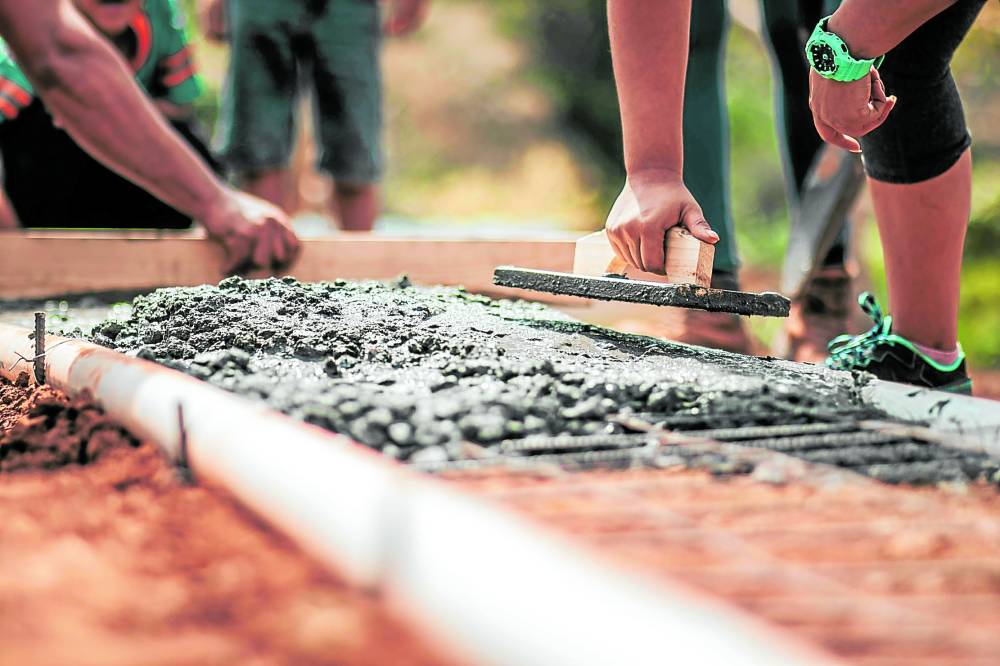
In the Philippines, almost everyone dreams of owning a home.
The idea of being able to create your own sanctuary that reflects your taste and personality seems like the ultimate achievement. The reality of life, however, is that it takes a lot of courage and money to build a house. With the rising prices of materials and land values especially, the task may even feel impossible at times.
Even as an architect, I share in the struggle to achieve the ultimate dream home. My family is currently building our forever house and it’s not easy at all.
Thankfully, many colleagues and friends in the industry are helping us out with their words of wisdom and thoughtful guidance. Our experiences and their help have taught us many things in building our home. Here are some of the lessons I’ve learned both as a professional architect and a budding homeowner on how to save and maximize one’s budget in construction.
READ: Save money, save the planet
Research requirements prior to building
This may seem obvious, but it’s really something that many homeowners miss out on in the initial stages.
From financing to requirements, make sure you know what will be required for you to build your dream home before you actually start. It may take several months to gather and complete these requirements, but when you finally start construction, the process will be quicker and less painful.
Even the little details matter, such as determining the access roads needed by trucks to deliver your building materials. Try to think of everything that may present a challenge before they actually arise. It takes a lot of foresight to avoid problems, but if you do your research before construction, your efforts will pay off in the long run.
Agree on what you want during the design stage
This especially applies to couples who are both involved in building their house. While this may lead to a few quarrels and tears, it’s best to decide on the details of your house together during the design stage. As my friend Ar. Alexander Fria of TBEI OPC asserts, the less variations you request during actual construction, the less money, time and effort wasted.
Variations may sometimes be necessary when unforeseen circumstances arise, but minimize them as much as you can to save money. Contractors quote on the final plans delivered in blueprint, and any changes you ask for after the final plans have been delivered can become additional expenses. In my case, it took more than a year to finalize our house layout, but my husband and I couldn’t be any happier with our final design.
Choose your contractor wisely
Please don’t look for a random contractor on Facebook. Instead, ask for recommendations and interview potential candidates before deciding on one.
If you can’t make up your mind, you have the option of bidding out your project and selecting your contractor based on their quotations, portfolio and professional advice of your designer.
Consider the work experiences, office location, and list of completed projects of potential contractors. Choose someone who can easily visit your project site on a regular basis and would require less costs in assembling his team onsite. Also make sure that your project foreman is dependable and is a true leader. The foreman leads all your workers onsite, so he must be someone knowledgeable both in building structures and handling people.
Unfortunately, there are contractors out there who do abandon you when things get difficult and finances fall during the construction process. So it’s important that your contractor has a proven track record of completing projects from start to finish. Be wise in your decision because it’s difficult to restart with a new team in the middle of the construction process.
Buy in bulk as much as possible
You can sometimes get discounts when you buy direct from suppliers in bulk.
Ar. Fria says that if you are able to pay your contractor on time, he is in a better position to supply services, materials and labor in a more efficient and timely manner. Most experienced contractors know where they can get quality materials at an affordable price.
Better yet, if you have the time to personally scout for suppliers and order materials during construction, ask that owner-supplied materials (OSM) be removed from your contractor’s scope. OSM are materials which you, the homeowner, will directly purchase from suppliers and arrange to be delivered onsite. Just make sure that you will be able to order these on time when the contractor calls for it, and you’ll save a lot in the long run.
Know when you can recycle
It’s best to go with new and quality materials when building, but there are some materials that you can recycle from previous projects. In our case, Engr. Jethro Aliston, our contractor, was able to procure second-hand coco lumber to be used as temporary support to the building structure. If you also have vintage windows, tiles and hardwood from a previous house onhand, these can add an old-world charm to your new home.
Trust the process and get a professional
Overall, it can be nerve-racking and painful to build a home, but with a lot of prayers and good decisions, the process will be completed. Hire professionals to build your home because they have the experiences and know-how to help you maximize your budget and minimize your stress.
Remember that at the end of the day, your home will be your family’s shelter through storms and earthquakes. You should never compromise quality work and craftsmanship. Instead, save money on other things that professionals will be able to advise you on. For more insider tips, consult an architect today.
Sources:
Alexander Brian Fria of TBEI OPC and Engr. Jethro Aliston; Kelly, Rodolfo Quirós, Pixabay and Thijs van der Weide via pexels.com

